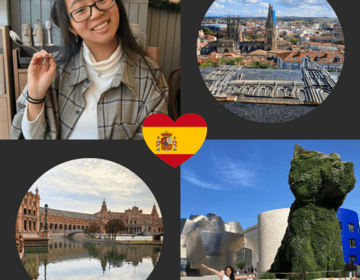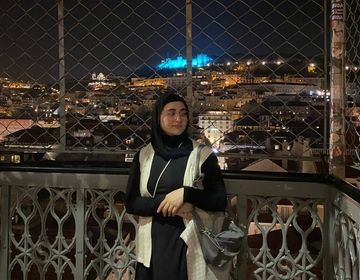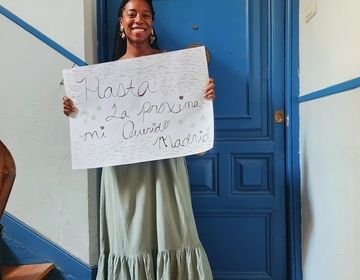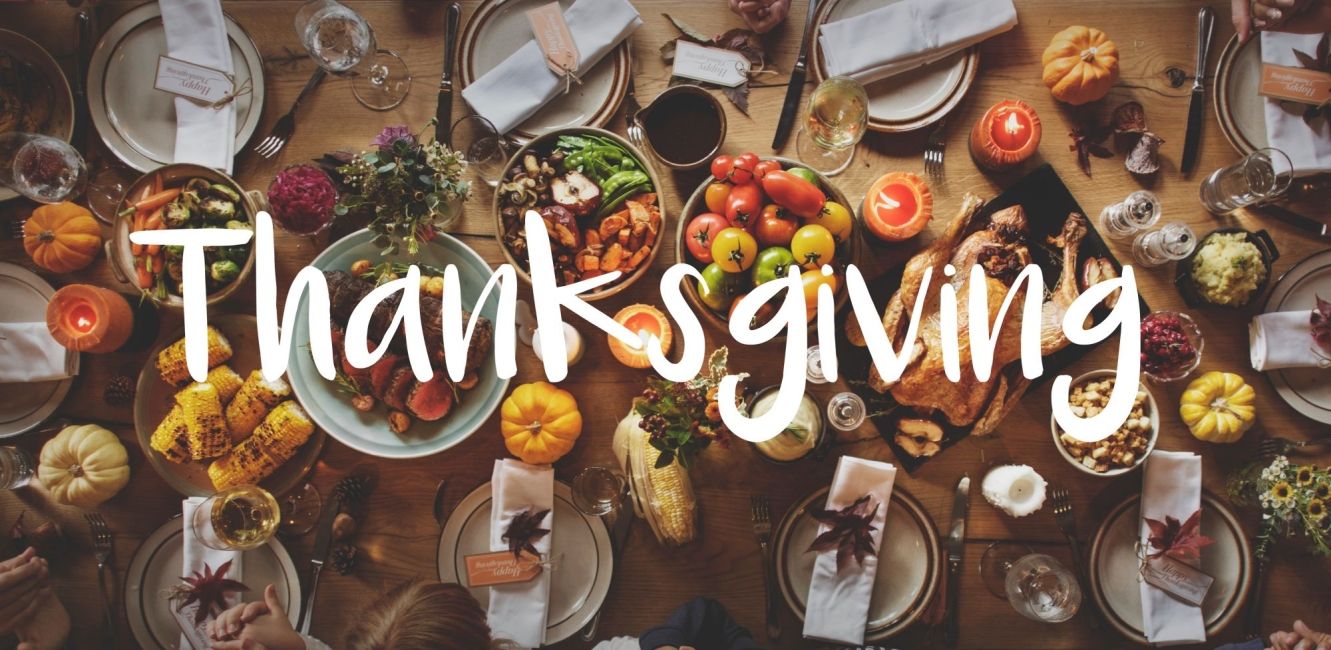November: Changing the Way We Teach Thanksgiving
November was another difficult month for me. So much so that I seem to have forgotten most of it, amidst the stress and the chaos. It was the month of finally filing my empadronamiento, finding a new place (again), getting my fingerprints taken at last for my TIE (a month after my original appointment), multiple IKEA trips, signing up at a local gym, and installing wifi. I also began to work on MOOC (a massive online course, required if you want to renew another +ear in Madrid) with my coworkers. I would recommend starting this process early like we did, as it is a long and extensive course.
There were of course some moments in between to be grateful for: going to Austria and German for the first time, and celebrating some recently made friends' birthdays back to back. In spite of feeling worn down from running across the city in order to set up a new life once more (I ended up moving from Entrevias to Embajadores), Thanksgiving felt like a moment where I finally allowed myself to breathe for air. It was a time of year to strengthen bonds and set aside misunderstandings. It was a time to express gratitude for all I had in this life, as well as what I had accomplished. I was relieved I did not have to choose which half of my family to celebrate with this year, and initially hesitant to participatee in Friendsgiving, as it has not always been a happy time of the year for me. In the end, I am very glad that we made it happen. I prepared a dish of sauteed spinach, mushroom, and raisin (an effort I never seem to be able to replicate for myself, but that I will make for a momentous occasion such as this). I placed the still hot dish in my carrefour bag and took the train to meet the people I would share this holiday with, most of them for the first time. It was a strange and surreal experience, compared to all the Thanksgivings before.
At first when I rang the bell I was confused, as the woman who answered spoke perfect Spanish, and I panicked that I had the wrong apartment. Still, I managed to muster that I was a friend of my friend, and we managed to connect the dots and laugh hard about it afterwards. I was welcomed into a warm home, and the hostesses were all lovely and inviting. They offered me a glass of wine, and had prepared warm dishes of their own. It would be a small, but comfortable feast. I felt surrounded by cheer and good will, and was comfortable even though my friend had not arrived yet. When she arrived, we finally began the meal, and I was happy to hear that my dish turned out to be a hit. Theirs was also healthy and hearty. There were smiles and laughter at the table, as we talked about our teaching in Spain experience, and our hopes for the future. There was a point where we all went around the table and said something we were thankful for, which was very heartwarming. There was also a point in time where we all were quite buzzed on holiday wine and cheer, and Queen's "Need Somebody to Love" came up on our playlist. We all began to sing along, as it were the most natural thing to sing on Thanksgiving.
This is the beautiful side of Thanksgiving, and the reason I believe that we still teach Thanksgiving as a day that the Pilgrims ate peacefully with the Indians. This version of history is more comfortable, more in line with the spirit in which we celebrate it. But there is a more problematic origin of the holiday, one we should not sweep under the rug in the name of discomfort. In truth, for the first century of its existence, Thanksgiving was a celebration of a massacre of the natives. It was not until much later, when Abraham Lincoln revived the holiday as a way to unite the country, of former Unions and Confederates, that we wove together a friendlier story. This may have been understandable at the time, but it pains me that even today, in 2019, we cannot honor the suffering that was brought about to the Native people. Thanksgiving and Columbus Day should become a time of reflection, and the gone should be the days where we sweep history under the rug.
Thus, when I was asked to present on Thanksgiving at my schools, I was initially quite conflicted. I wanted to discuss the darker side of the holiday, but it seemed like a difficult subject for an ESL class. So, in my first presentation, I presented the convenient tale of Indians and Pilgrims. As it was a bachillerato class, I had a student ask about the cruelty towards the Native Americans, and I thought perhaps it was okay to discuss the subject matter after all. The teacher seemed receptive to it as well. I had internalized, I suppose, that what teachers wanted was the easy history, not the hard one. Over the course of the week, I gauged the English level of my varying ESO and bachillerato classes, and whether we would be able to hold a discussion about Native perspective and suffering. On the Madrid Auxiliares Facebook group, I saw a teaching assistant shared a video link for "One Word," in which the native people shared one word they associated Thanksgiving with. It was perfect for ESO. I was a little nervous at first sharing the video with twelve and thirteen year olds, wondering if I was introducing difficult subject matter too soon. Again however, the teacher and the students responded well to the video, and it led to an open discussion about whether we should reconsider some of our holidays, and how we teach them.
I learned through this experience, that there is no reason to teach holidays in outdated ways, and that it is okay to update our history. It is okay to adapt how we teach things to our youth, as this is the age they can see things differently, reflect on them, and change our world. To the low level classes, I shifted the focus more to how we celebrate Thanksgiving in America, and asked them what kinds of foods they would want to eat, if they had a Thanksgiving in Spain. This seemed to work with any age group, and the kids got very excited to contribute a variety of ideas, including dishes from their native countries that I had never heard of. So, if you are like me and feel conflicted about how to teach Thanksgiving, I would recommend starting with the traditional teaching, and then challenging that with the native perspective. Discuss the differences between the perspectives. Ask how Thanksgiving might be celebrated in Spain, and how they might do things differently. Ask the students what they are grateful for. In the end, the holiday is rich in activities and conversation ideas for all levels, so be creative, and have fun!
Related Posts

TWICE with CIEE: Kayleigh in Spain (PART 2)
Kayleigh is a CIEE alum who participated in CIEE's Teach in South Korea program AND CIEE’s Teach in Spain Volunteer program! CLICK HERE to read her experience in Korea. WHY... keep reading

CIEE Volunteer Spotlight: Meet Layla!
Where are you from? What was your academic background or career before teaching abroad? I am Canadian, specifically Québécoise. In Quebec, students are required to attend community college (CEGEP) before... keep reading


